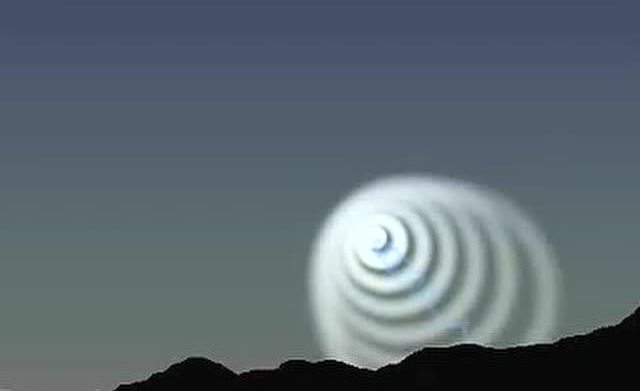evertheless, there are two rather curious objections to this secondexplanation. Granting that the object really places the medium incommunication with an unknown entity discovered in space, how comes itthat the image or the spectacle created by that communication hardly evercorresponds with the reality at the actual moment? On the other hand, it isdisputable that the psychometer's clairvoyance, his gift of seeing at adistance the pictures and scenes surrounding an unknown being, isexercised with the same certainty and the same power when the object thatsets his strange faculty at work has been touched by a person who hasbeen dead for years. Are we, then, to admit that there is an actual, livingcommunication with a human being who is no more, who sometimes, forinstance, in a case of incineration-has left no trace of himself on earth, inshort, with a dead man who continues to live at the place and at themoment at which he impregnated the object with his"fluid" and whoseems to be unaware that he is dead?But these objections are perhaps less serious than one might believeTo begin with, there are seers, so-calledtelepsychics, who are notpsychometer, that is to say, they are able to communicate with anunknown and distant person without the intermediary of an object, and inthese seers, as in the psychometer, the vision very rarely correspondswith the actual facts of the moment: they too perceive above all thegeneral impression, the usual and characteristic actions. Next, as regardscommunications with a person long since dead, we are confronted withone of two things: either confirmation will be almost impossible when itconcerns revelations on the subject of the dead man's private deeds andactions, which are unknown to any living person or else communicationwill be established not with the deceased, but with the living person, whonecessarily knows the facts which he is called upon to confirm. As DOsty very rightly saysThe conditions are then those of perception by the intermediary of thethoughts of a living person, and the deceased is perceived through amental representation. The experiment, for this reason, is valueless asevidence of the reality of retrospective psychometry and consequently ofthe recording part played by the object.The only class of experiment that could be of value from this point ofview, would be that in which confirmation would come subsequently fromdocuments whose contents remained unknown to any living person untilafter the clairvoyance sitting. It might then be proved that the object canlatently register the human personalties which have touched it and that itis sufficient in itself to allow of a mental reconstruction of thosepersonalties through the interpretation of the register by a clairvoyant orpsychometer.

It may be imagined that experiments of this sort, in which there is nocrack, no leak on the side of the living, are any thing but easy to carrythrough. In the case of a murder, for instance, it can always be maintainedthat the medium discovers the body and the circumstances of the tragedythrough the involuntary and unconscious intermediary of the murderer,even when the latter escapes prosecution and suspicion altogether. But arecent incident, related by Dr. Osty with the utmost precision of detail andthe most scrupulous verification in the Annales des Sciences Psychiques ofApril, 1914, perhaps supplies us with one of those experiments which wehave not been able to achieve until this day. i give the facts in a fewwordsOn the 2nd of March of this year. M. Etienne lerasle, an old man ofeighty-two, left his son's house at Cours-les-Barres(Cher) for his dailywalk and was not seen again. The house stands in the middle of a forest onBaron Jaubert's estate. Vain searches were made in every direction for themissing man's traces; the ponds and pools were dragged to no purposeand on the 8th of March a careful and systematical exploration of thewood, in which no fewer than twenty-four people took part, led to noresult. At last, on the 18th of March, M. Louis mirault, Baron Jaubert'sagent, thought of applying to Dr. Osty, and supplied him with a scarfwhich the old man had wom. Dr Osty went to his favourite medium. MmeM-. He knew only one thing, that the matter concemed an old man ofeighty-two, who walked with a slight stoop; and that was all
As soon as mme M- had taken the scarf in her hands. she saw thedead body of an old man lying on the damp ground, in a wood, in themiddle of a coppice, beside a horse-shoe pond, near a sort of rock. Shetraced the road taken by the victim, depicted the buildings which he hadpassed, his mental condition impaired by age, his fixed intention of dyinghis physical appearance, his habitual and characteristic way of carrying hisstick, his soft striped shirt, and so on.The accuracy of the description caused the greatest astonishmentamong the missing man's friends. There was one detail that puzzled them alittle: the mention of a rock in a part of the country that possessed noneThe search was resumed on the strength of the data supplied by theclairvoyant. But all the rocks in a forest are more or less alike: theindications were not enough; and nothing was foundIt so happened that the second and third interviews with Mme. M--hadto be postponed until the 30th of March and the 6th of April following. Ateach of these sittings, the details of the vision and of the road takenbecame clearer and clearer and were given with startling precision, somuch so that, by pursuing step by step the indications of the medium, theman's friends ended by discovering the body, dressed as stated, lying in themiddle of a coppice, just as described, close to a huge stump of a tree allcovered with moss, which might easily be mistaken for a rock, and on theedge of a crescent-shaped piece of water. I may add that these particularndications applied to no other part of the wood
